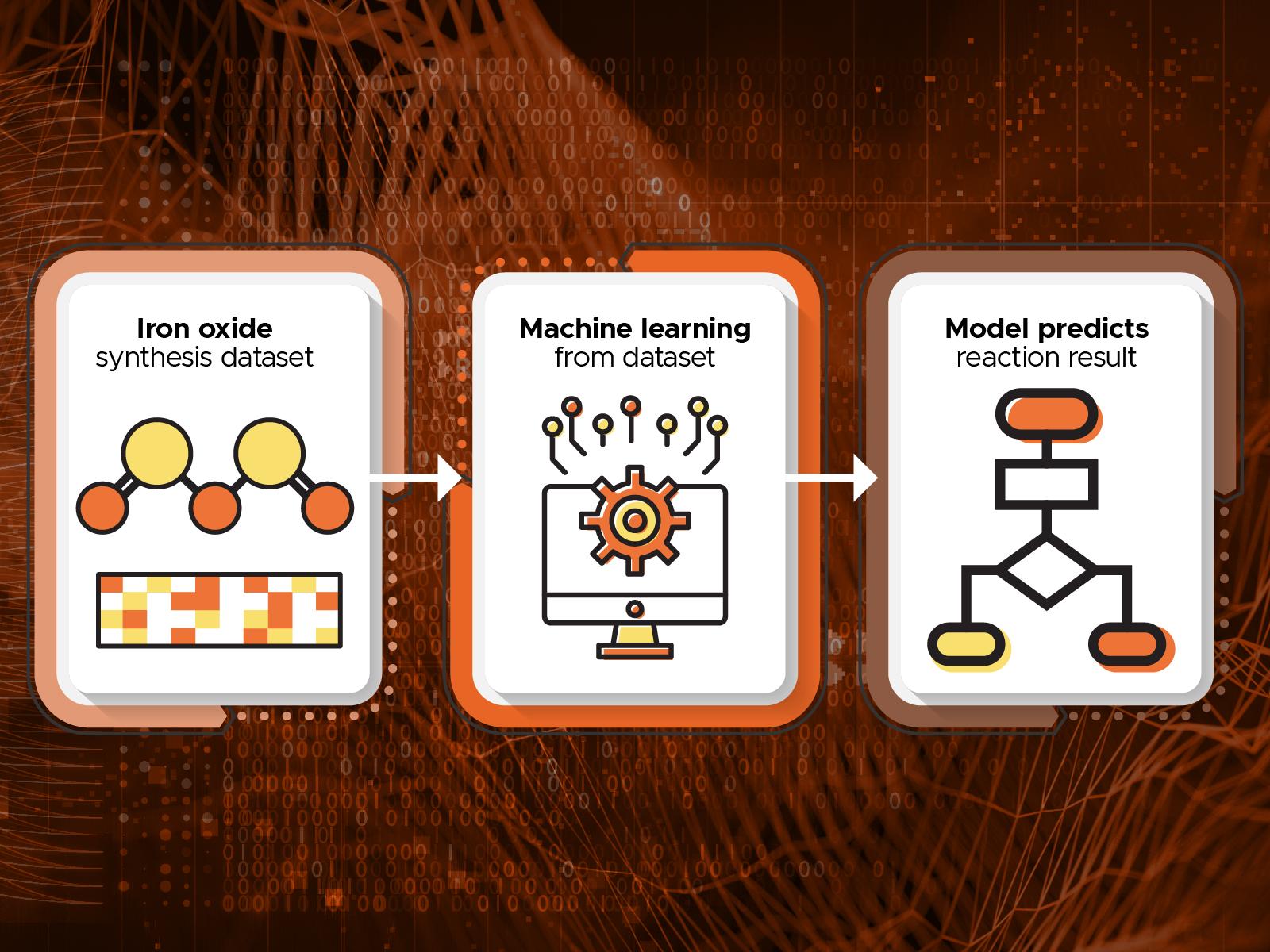Developing Data Science Approaches for Nanoparticle Synthesis
Machine learning methods and data science can uncover hidden patterns in nanoparticle synthesis conditions and property outcomes

A machine learning model can predict potential outcomes for different reaction conditions in the synthesis of iron oxide particles.
(Image by Xin Zhang and Stephanie King | Pacific Northwest National Laboratory)
The Science
Typically, researchers attempting to synthesize specifically targeted particles of materials have had to rely on intuition or trial-and-error methods. This approach can be inefficient, requiring significant time and resource investments. Researchers employed data science and machine learning (ML) techniques to help streamline synthesis development for iron oxide particles. The trained model can predict potential particle size and phase for a set of experimental conditions, identifying promising and feasible synthesis parameters to explore. Additionally, the ML-based approach highlighted the importance of pressure on the final reaction outcome. This variable has been generally overlooked in many iron oxide nanoparticle synthesis attempts.
The Impact
ML and data science are powerful tools to help make science more efficient, but can be challenging to effectively integrate and use. Deep collaboration between synthesis experts and data scientists led to an algorithm that can effectively identify the outcome of iron oxide particle synthesis. This new approach represents a shift in the way that researchers can approach synthesis, leading to faster and more effective development of particles with selected sizes and phases.
Summary
Synthesizing iron oxide particles to achieve desired phases and sizes has conventionally relied upon intuition and a time-consuming trial-and-error methodology. To overcome the ambiguities of this approach, researchers harnessed the power of data science and ML techniques to address two pivotal issues: identifying feasible experimental conditions and foreseeing potential particle characteristics for a given set of synthetic parameters. This innovative approach represents a paradigm shift for metal oxide particle synthesis, potentially markedly economizing the time and effort expended on ad hoc iterative synthesis approaches. By training the ML model on careful experimental characterization, the approach demonstrated remarkable accuracy in predicting iron oxide outcomes based on synthesis reaction parameters. The search and ranking algorithm yielded plausible reaction conditions to explore from the input dataset. It also revealed the previously overlooked importance of pressure applied during the synthesis on the resulting phase and particle size.
PNNL Contact
Kevin Rosso, Pacific Northwest National Laboratory, kevin.rosso@pnnl.gov
Funding
This material is based upon work supported by the Department of Energy, Office of Science, Office of Basic Energy Sciences, Chemical Sciences, Geosciences, and Biosciences Division through its Geosciences (FWP 56674) program at Pacific Northwest National Laboratory (PNNL). A portion of the work was performed under user proposal 51382 at the Environmental and Molecular Sciences Laboratory (EMSL), a DOE Office of Science user facility at PNNL sponsored by the DOE Biological and Environmental Research program. PNNL is a multi-program national laboratory operated by Battelle Memorial Institute under contract no. DE-AC05-76RL01830 for the DOE. E.S., Y.L., W.W. and X.Z. also acknowledge support from the Energy Storage Materials Initiative at PNNL. S.W. acknowledges support from the National Science Foundation, Division of Civil, Mechanical, & Manufacturing Innovation, under award No. 1934120. X.G. acknowledges support from the National Science Foundation, Division of Earth Sciences, under award No. 2149848.
Published: January 24, 2024
Liu, Juejing, et al. "Machine learning assisted phase and size controlled synthesis of iron oxide particles." Chemical Engineering Journal, 145216 (2023). [DOI: 10.1016/j.cej.2023.145216]